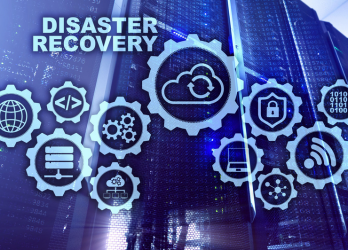Grant administration demands unwavering continuity. Every allocated dollar carries the potential to foster societal progress, making system resilience the paramount requirement. Amidst an era of escalating natural disasters, cyber-attacks, and unforeseen disruptions; prioritizing disaster recovery (DR) planning and testing becomes a non-negotiable imperative for U.S. government agencies managing grant programs.
The Looming Threat of Disruption: Consequences and Complexities
Disruptions to grant administration systems can have cascading effects, jeopardizing timely fund disbursement and essential service delivery to vulnerable communities. Hurricanes, floods, cyber intrusions, and system failures represent a diverse and omnipresent threat portfolio. Mitigating these risks necessitates comprehensive DR plans outlining response and recovery protocols.
The intricate nature of supporting IT infrastructure presents a significant challenge. Interconnected databases, applications, and networks across multiple locations make vulnerability and dependency identification a daunting task. The fluid backdrop of grant program regulations further necessitates adaptive and agile DR strategies.
Building Resilience Through Software Testing:
Effective DR planning requires rigorous testing to validate recovery procedures and ensure system resilience. Testing methodologies must encompass a broad spectrum of disruption scenarios – encompassing data backup and recovery, failover mechanisms, and restoration processes – to realistically simulate real-world challenges and assess system preparedness.
A robust DR testing framework integrates various techniques. Tabletop exercises enable stakeholders to navigate potential scenarios, identify response gaps, and refine recovery strategies. Simulation-based testing allows for controlled disruption simulations and real-time evaluation of recovery measures.
Furthermore, automated testing tools accelerate the testing process and enhance test coverage. Verifying data backups, testing failover procedures, and automating application recovery testing streamline efforts and ensure system resilience. By leveraging automation, agencies can dedicate resources toward continuous improvement.
Industry Validation and Continuous Improvement
The criticality of DR planning and testing has garnered recognition from industry leaders and regulatory bodies. The Federal Emergency Management Agency (FEMA) underscores the importance of robust DR plans for grant recipients, urging organizations to develop comprehensive plans and conduct regular testing exercises.
Conclusion:
DR planning and testing form the cornerstone of ensuring U.S. grant administration system resilience and continuity. By prioritizing proactive planning, rigorous testing, and continuous improvement, government agencies can minimize disruption impact and uphold their commitment to supporting vulnerable communities. As the threat landscape evolves, investing in DR readiness becomes essential for safeguarding the integrity and effectiveness of grant programs nationwide. The future of grant administration demands proactive resilience, ensuring that allocated funds continue to empower positive societal change.


